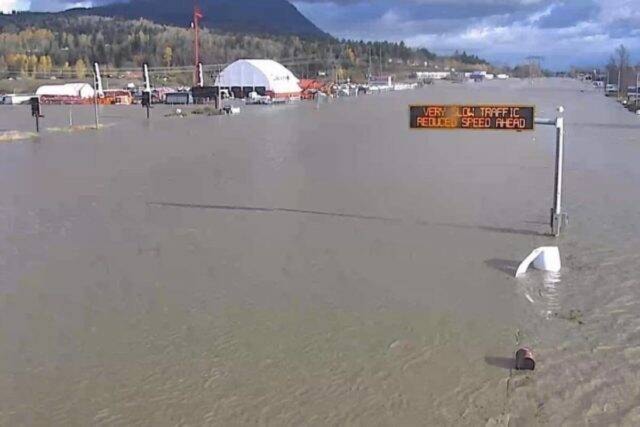The term sa���ʴ�ý�atmospheric riversa���ʴ�ý� came up earlier this week in the newsroom after warmer temperatures and heavy rainfall triggered a flood watch in the Lower Mainland.
Comments in-house about the phenomena were not favourable, as the Shuswap and other parts of the province also experienced seemingly unseasonable warm, wet weather that no doubt diminished snowpack levels which, as of Jan. 1, were considered by B.C.sa���ʴ�ý�s environment ministry to be sa���ʴ�ý�extremely low.sa���ʴ�ý�
Many British Columbians became familiar with the term during the extreme wet weather of November 2021 that led to devastating floods and landslides that killed five people.
For those who donsa���ʴ�ý�t know, the term sa���ʴ�ý�atmospheric riversa���ʴ�ý� was coined in the U.S. in 1998, and refers to sa���ʴ�ý�long narrow streams of high water vapour concentrations in the atmosphere that move moisture from tropical regions towards the poles across the mid latitudes.sa���ʴ�ý� This is according to the Atmospheric Rivers State of Knowledge Report, released by the Pacific Climate Impacts Consortium, the Pacific Institute for Climate Solutions and B.C.sa���ʴ�ý�s environment ministry.
The same report notes that as the planet continues to warm, we can expect atmospheric rivers and other extreme events to sa���ʴ�ý�intensify, move northward and become more frequent over time.sa���ʴ�ý�
While B.C. continues to see more rain than snow, another part of the world known for its rainy season this time of year is in the midst of a destructive record drought.
December to May is normally the wet, rainy season in the Amazon Basin; however, according to scientists, an ongoing drought has drained rivers, resulted in the death of endangered dolphins and has upended the lives of millions of people. A report by said scientists points to poor land, water and energy management practices and climate change sa���ʴ�ý� not El Niño sa���ʴ�ý� as culprits.
Back in B.C., donsa���ʴ�ý�t let all the rainfall fool you. Last year was one of the driest on record for much of the Interior, and Environment Canada doesnsa���ʴ�ý�t expect this wintersa���ʴ�ý�s precipitation will do anything to alleviate the long-term drought conditions wesa���ʴ�ý�ve been experiencing.
Regardless of where you stand on climate change, or atmospheric rivers, as an Environment Canada meteorologist puts it, sa���ʴ�ý�not having snowpack is going to be potentially very problematic going forward.sa���ʴ�ý� Particularly as we transition into summer/fire season, and potentially more record-breaking temperatures.
Lachlan Labere is the editor with the Salmon Arm Observer.
Read more:
Read more:



